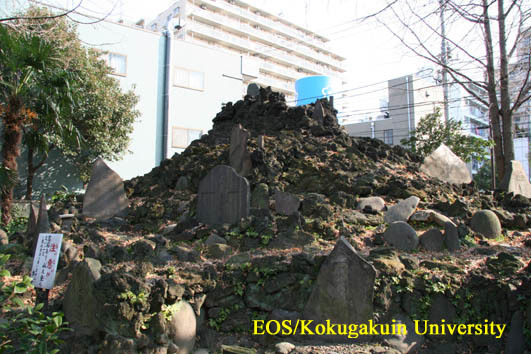- トップ
- Encyclopedia of Shinto
- Fuji/Sengen Shinkō
Encyclopedia of Shinto
| Main Menu: | |
| Links: |
詳細表示 (Complete Article)
| カテゴリー1: | 6. Belief and Practice |
|---|---|
| カテゴリー2: | Shrines and Cultic Practices |
| Title | Fuji/Sengen Shinkō |
| Text | The cult of Mount Fuji/Mount Sengen. The old reading of the characters 浅間 is asama. (they can also be read sengen). One theory as to why Mount Fuji was called Asama is based on the fact that the words "asa" and "aso" mean a volcano or a volcanic eruption, but there is still no generally accepted explanation. There is also Asama faiths related to both Mount Asama (浅間山) in Nagano Prefecture and Mount Asama(朝熊山)in Mie Prefecture. A story in the Hitachi no kuni fudoki relates that an "ancestor kami" (oyagami) requests lodging for one night from the kami Fuji of Fuji-dake (now Mount Fuji) and there is a poem with the words "the divine presiding kami" in the Manyōshū, which indicates that there was a faith of the deified Mount Fuji since times of old. The Fuji Hongū Sengenki records that in 806 Sakanoue no Tamuramaro moved the Fuji kami from a mountain shrine (yamamiya) to the foothills and established Fuji Hongū Sengen Jinja (currently Fujisan Hongū Sengen Taisha, in Fujinomiya City, Shizuoka Prefecture). The faith of the kami of Asama as a kami of water sources and of volcanoes developed, and the "kami's rank" (shinkai) rose. The kami of Asama was also enshrined in the region of Kai (present-day Yamanashi Prefecture). From the end of the Heian Period the faith combined with Shingon esoteric Shugendō practice and mountain religion (sangaku shūkyō), developed further. Climbing Mount Fuji was an expression of faith. There are legends that Prince Shōtoku and En no Ozunu climbed Mount Fuji and we can surmise from passages in the Fujisanki that there were already people who had climbed the mountain by the late Heian Period. It was not until the Muromachi Period, however, that pilgrimages up the mountain became popular and pilgrimage mandala paintings were produced to encourage people to climb Mount Fuji. We know from the Shintōshū that Mount Fuji was preached (shōdō) about as a utopia. In the city of Edo, the Shugendō practitioner Hasegawa Kakugyō proselytized and created a following, but soon afterwards the cult divided into the two factions led by Murakami Kōsei and Jikigyō Miroku. Fuji-kō (a religious association) were established and guides or preachers such as oshi and sendatsu built lodging facilities at the entrances to the climbing trails. As a result of their activities, Pilgrimage up Mount Fuji flourished. In the city of Edo, Fuji mounds (Fujizuka ) were built and climbed by many Edo residents. Places called "Fuji" and Sengen shrines appeared in many regions from where Mount Fuji could be seen, but the distribution of these names and shrines can also be seen as the results of the activities of oshi and other religious leaders. In the Kamakura Period (according to the Azuma kagami), Fuji's caves (hitoana) were believed to be the dwelling place of Sengen Daibosatsu, and "womb tours" (tainai meguri) became popular. Later, Hitoana-zōshi stories circulated and it was said that reading these books or hearing their stories resulted in the same merit as that earned by climbing Mount Fuji. See also Fuji Shinkō — Nogami Takahiro |





